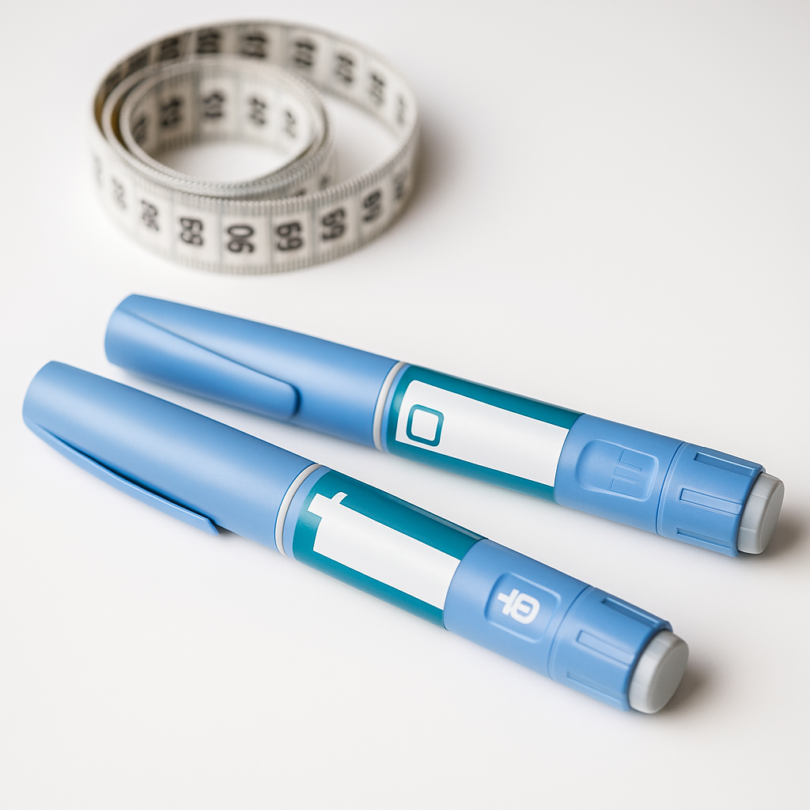Finding the best foods for diabetes control is not a matter of restriction or denial. It is more a matter of learning how to find foods that work for you. The correct foods for diabetes control can improve the quality of life, providing energy, a more balanced mood, and the assurance that comes with taking personal responsibility for your well-being.
I want to share a personal observation with you: I’ve noticed that friends and family members who embark on this process tend to fare well, and it’s those who regard food as medicine, rather than the enemy, who do so.
Type 1 vs Type 2 Diabetes
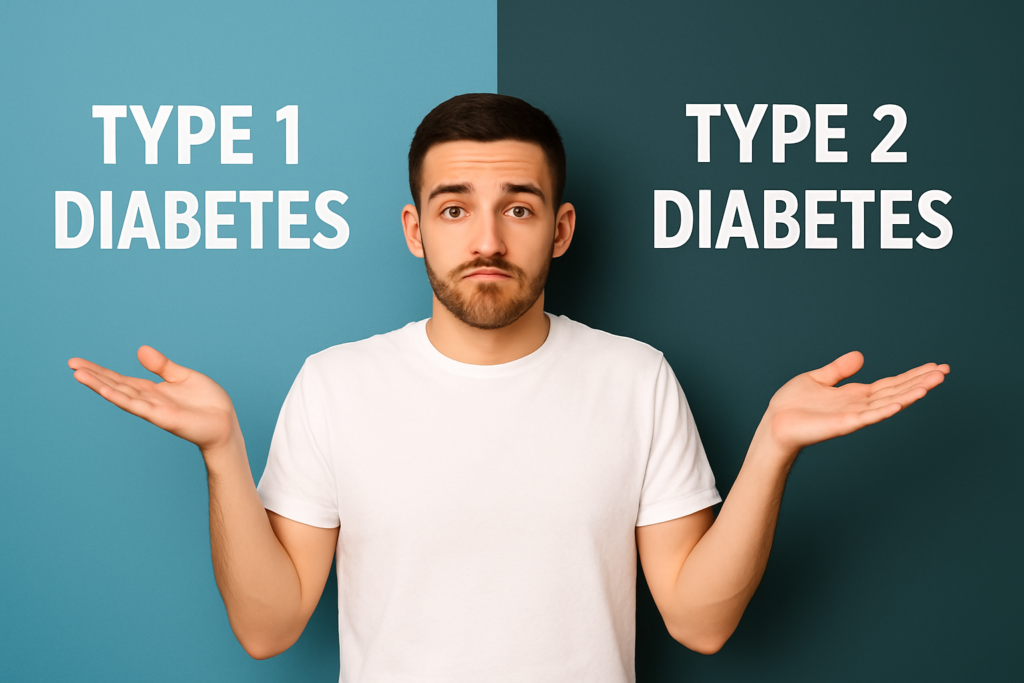
Type 1 and Type 2 diabetes are chronic diseases that affect the body’s regulation of sugars and differ in cause and onset.
- Type 1 diabetes is an autoimmune condition in which the pancreas produces little to no insulin.
- Type 2 diabetes is the result of the body not using insulin effectively, typically in association with declining insulin production. Prediabetes is an earlier warning period with elevated blood glucose, and it provides a time period for correction of behavior before the development of type 2 diabetes.
One good thing about nutrition is that it goes directly into your cells and gets them functioning more effectively, regardless of the type of diabetes.
Foods for Diabetes Control
Managing blood sugar is important for people with diabetes and those looking to stay healthy. Research and medical guidelines identify certain foods that help control blood sugar and prevent complications. Below are the most trusted foods for blood sugar management based on scientific evidence.
1- Leafy Green and Non-Starchy Vegetables
- Extremely low in digestible carbohydrates, high in fiber and antioxidants.
- The best choices are Spinach, kale, broccoli, cauliflower, peppers, cucumbers, green beans, asparagus.
- These vegetables have a minimal impact on blood sugar levels and are rich in micronutrients that are beneficial for metabolic health.
2- Whole Grains and High-Fiber Foods
- Fiber slows carbohydrate absorption and moderates blood sugar spikes.
- The best choices are Oats, quinoa, barley, brown rice, whole wheat, bulgur.
- Studies confirm that diets rich in whole grains are associated with improved glycemic control and a lower risk of diabetes.
3- Legumes
- High in fiber, protein, and low glycemic index.
- The best choices are Black beans, chickpeas, lentils, kidney beans.
- Clinical trials have shown that legume consumption improves both fasting and postprandial glucose levels, potentially helping to reduce the risk of diabetes.
4- Nuts and Seeds
- Provide healthy fats, protein, and fiber; promote fullness and stable blood sugar.
- The best choices are Walnuts, almonds, chia seeds, flaxseeds, pumpkin seeds.
- Research demonstrates that nuts, especially tree nuts and seeds such as flax and chia, lower both fasting and postprandial glucose levels.
5- Fatty Fish
- Rich in omega-3s and protein, supports cardiovascular health, which is especially important for diabetes.
- The best choices are Salmon, sardines, mackerel, herring, anchovies.
- Consuming fatty fish is associated with improved blood sugar regulation and a reduced cardiovascular risk.
6- Fresh Fruit (Favoring Low-Glycemic Choices)
- Natural fiber content slows sugar absorption; fruits also provide antioxidants.
- The best choices are Berries (blueberries, strawberries, raspberries), apples, pears, oranges, cherries.
- Studies recommend whole fruits over juices to leverage fiber and reduce glycemic impact.
7- Fermented Dairy and Probiotic Foods
- Fermented dairy (yogurt, kefir) and foods (kimchi, sauerkraut) improve gut health and may support glucose control.
- The best choices are Plain Greek yogurt, kefir, sauerkraut, kimchi. Both human and animal studies have shown improvements in blood sugar and insulin sensitivity with the regular intake of fermented foods
8- Healthy Fats
- Aid in satiety, promote heart health, and may blunt blood sugar spikes when replacing carbohydrates.
- The best choices are Avocados, olive oil, canola oil, nuts, seeds.
- Dietary guidelines recommend prioritizing unsaturated fats over saturated or trans fats for glycemic and cardiac health.
9- Eggs and Lean Protein Sources
- High protein content supports satiety, limits post-meal glucose spikes, and provides essential nutrients such as vitamin D.
- The best choices are Eggs, poultry, tofu, low-fat dairy.
- Recent trials suggest that vitamin D-rich foods, such as eggs, along with low-glycemic proteins, may aid in blood sugar management.
10- High-Polyphenol “Superfoods”
- Polyphenols have anti-inflammatory effects and may directly support glycemic control.
- The best choices are Berries, dark leafy greens, certain whole grains, and green tea.
- Narrative reviews highlight polyphenol-rich foods as particularly beneficial for glycemic control in individuals with type 2 diabetes.
Additional Tips for Using These Foods
- According to research in PubMed Central Consistency and balance matter: Combine proteins, healthy fats, and fiber-rich carbs to blunt glucose spikes.
- According to research in PubMed Central Meal timing and food order: New research suggests eating proteins and fiber before carbohydrates in meals can lower post-meal blood glucose.
- Personalization is key: Work with a nutrition professional to tailor choices to your medical needs, lifestyle, and preferences.
The Fatty Liver Connection
According to the research done in the PubMed Central, Many people with diabetes also develop fatty liver disease, an ailment wherein excess fat is deposited in the cells within the liver. This is because whenever your blood glucose remains elevated, your liver is converting the extra glucose into fat. The below listed 10 good foods for diabetes are also good for the health of livers.
Liver-friendly foods include:
- Fatty fish rich in omega-3s (salmon, sardines, mackerel)
- Leafy greens that support detoxification
- Nuts and seeds for healthy fats
- Berries packed with antioxidants
- Green tea for its protective compounds
Your liver processes everything you eat, so choosing nutrient-dense foods reduces its workload while providing the compounds it needs to function optimally.
Low Blood Sugar: The Other Side of the Coin
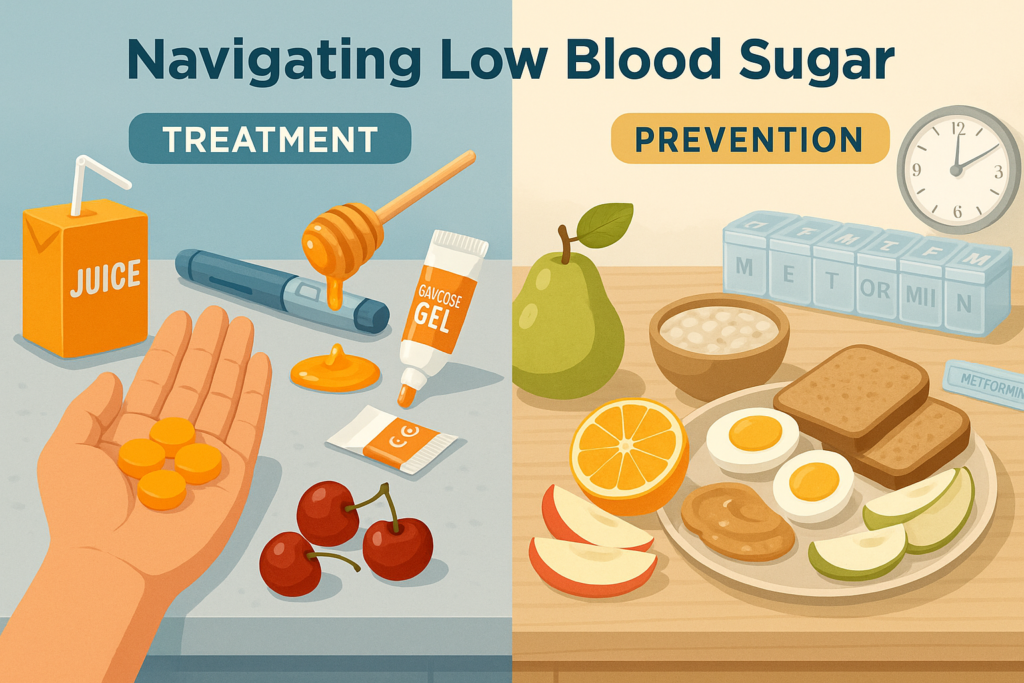
While prevention against high blood sugar is more general, the diabetic patient should also be ready for hypoglycemia (low blood sugar). Its probability is variable with the various diabetics. Type 2 diabetics managed with diet or with metformin alone hardly ever get hypoglycemia.
For treating low blood sugar:
- Glucose tablets (15-20 grams)
- 4 ounces of fruit juice
- 1 tablespoon of honey
- 3-4 glucose gels
For preventing low blood sugar:
- Regular, balanced meals
- Protein-rich snacks
- Complex carbohydrates that provide steady energy
- Avoiding long gaps between meals
The key is having a plan and keeping appropriate foods accessible, especially if you take insulin or other blood sugar-lowering medications.
5 Best Fruits For Diabetics
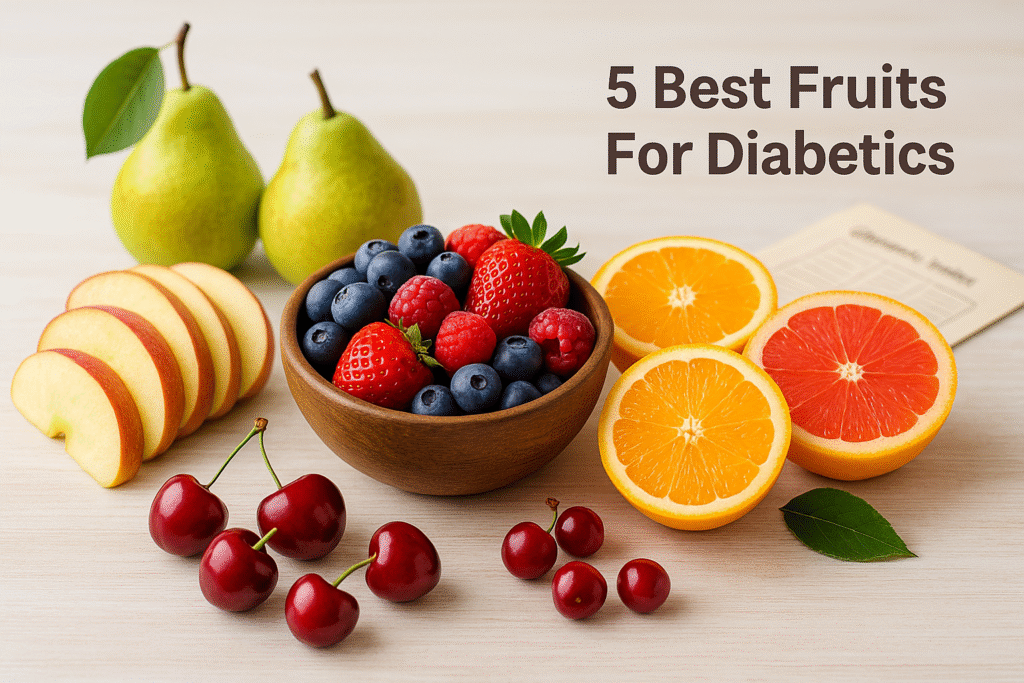
You can eat fruits and add them to your best foods for diabetes control when chosen thoughtfully. Here, we present the 5 best fruits for diabetics. The key is selecting fruits with a lower glycemic index and being mindful of portion sizes.
Smart fruit choices:
- Berries (blueberries, strawberries, raspberries)
- Apples with their skin for fiber
- Citrus fruits (oranges, grapefruits)
- Cherries for their anti-inflammatory properties
- Pears for their fiber content
Always choose whole fruits over juices, and consider pairing fruits with a protein or healthy fat to slow absorption.
Practical Implementation
The best foods for diabetes control only work if you can consistently incorporate them into your daily routine. Here’s how to make lasting changes:
Weekly planning strategies:
- Prep vegetables on Sunday for easy weekday use
- Cook grains in batches for quick meals
- Keep nuts and seeds portioned for snacks
- Plan balanced meals that include protein, fiber, and healthy fats
Reading labels like a pro:
- Look for “whole grain” as the first ingredient
- Check for added sugars in unexpected places
- Pay attention to serving sizes
- Choose products with minimal ingredients
Sample Day: Bringing It All Together
A Realistic 24-Hour Food Plan
- Breakfast: Steel-cut oats with berries, chopped walnuts, and a dollop of Greek yogurt
- Mid-morning snack: Apple slices with almond butter
- Lunch: Large salad with grilled chicken, chickpeas, olive oil dressing, and avocado
- Afternoon snack: Hummus with bell pepper strips
- Dinner: Baked salmon with roasted vegetables and quinoa
- Evening: Herbal tea with a small handful of mixed nuts
This day incorporates the best foods for diabetes control while providing variety, satisfaction, and stable blood sugar levels.
Recommended Products for Your Diabetes
1. Continuous Glucose Monitor (CGM)
A CGM system enables you to view how different foods affect your blood sugar levels in real-time. This technology enables you to make informed decisions about the best foods for managing diabetes, tailored specifically to your individual needs and responses.
2. High-Quality Omega-3 Supplement
Whereas whole foods is where it must begin, a pharmaceutical-grade omega-3 supplement can help ensure that you’re ingesting adequate EPA and DHA for heart and metabolic health, and specifically if you’re an infrequent consumer of fish.
3. Fiber Supplement (Psyllium Husk)
You can add a fiber supplement that slows the absorption of glucose and supports digestive wellness. Blend it with smoothies or stir it into Greek yogurt for an added fiber kick with your diabetes-friendly foods.
4. Digital Food Scale
Portion control is crucial for managing blood sugar. A digital food scale helps you understand appropriate serving sizes of the best foods for diabetes control without the guesswork.
5. Berberine Supplement
Berberine is a natural plant compound that has gained significant attention for its ability to support healthy blood sugar levels, particularly in people with type 2 diabetes. Studies have shown that berberine can lower both fasting and long-term blood glucose by enhancing insulin sensitivity.
Frequently Asked Questions About Diabetes-Friendly Foods
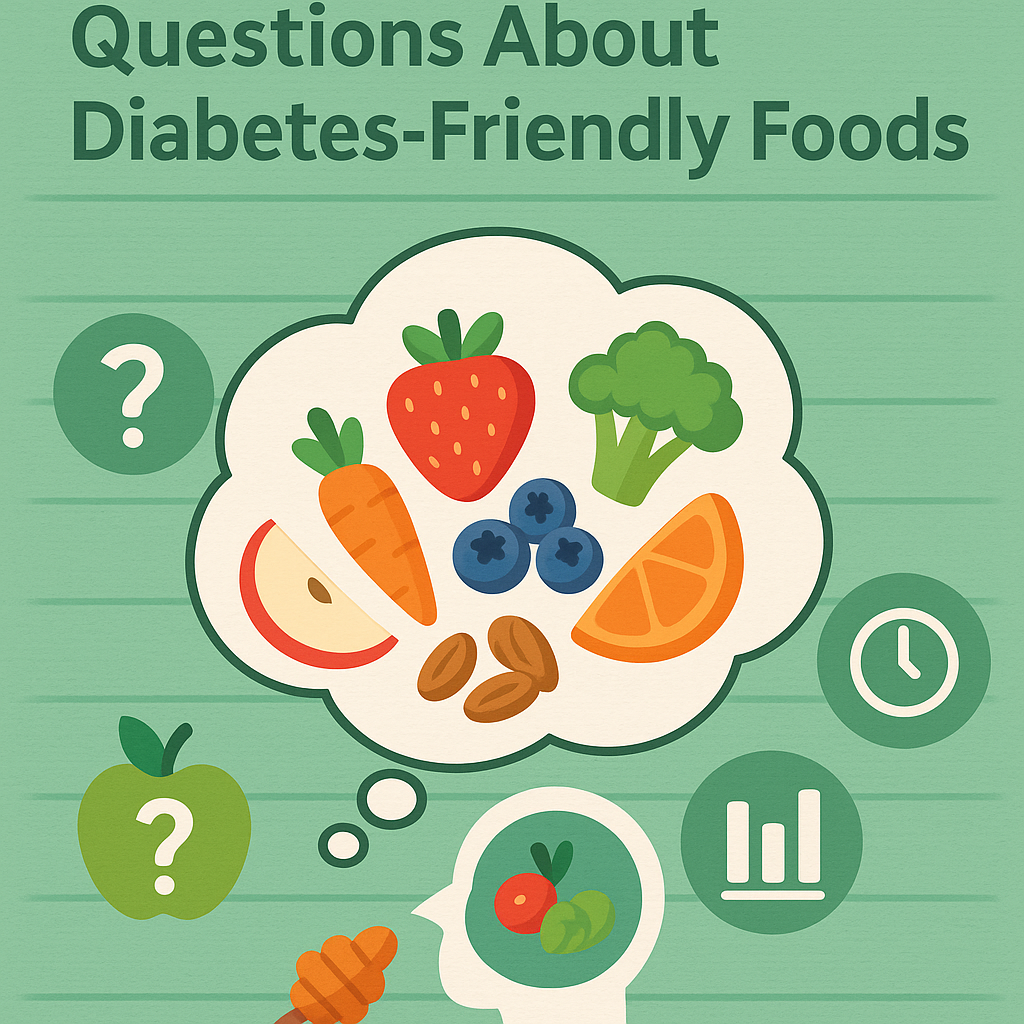
Should I avoid all carbohydrates to manage my blood sugar?
No, you do not need to cut all carbs. Your body requires carbs for fuel, particularly your brain. The key is making the right choices – complex carbs in the form of whole grains, beans and vegetables give slow-burning energy without erratic spikes in blood sugar. Quality is more important than quantity.
Are artificial sweeteners safe for people with diabetes?
While artificial sweeteners themselves do not actually raise blood sugar per se, they themselves are not the ultimate long game. One recent study suggests they could possibly change gut flora and thus affect glucose metabolism. Use the natural alternatives, stevia or monk fruit, instead, and focus on gradually reducing incidental sweetness use by featuring naturally delicious whole foods.
How important is meal timing for blood sugar control?
Meal timing is important for controlling diabetes. Regular eating keeps your body steady with the production of insulin and stops dangerous dips or spikes in your blood sugars. Aim for three good meals and 1-2 nutritious snacks per day, with them separated 3-4 hours apart in order to complement the natural rhythms of your body.
Can I follow a vegetarian or vegan diet with diabetes?
Definitely! Plant-based diets are excellent for managing diabetes when carefully planned. Focus on including plenty of beans, nuts, seeds, and whole grains for protein, and be sure to supplement with enough B12, iron, and omega-3 fatty acids. Many of the best foods for managing diabetes are vegan anyway, so this is more refining the plan and not making drastic shifts.
Choose Your Journey Forward
Controlling diabetes with diet is not about becoming perfect – it’s about making progress. Each meal is a chance to feed your body and help maintain stable blood sugar. The most favorable foods for controlling diabetes are among the best-tasting, most filling foods you’ll eat.
Remember, you’re not alone in this. Work with your healthcare providers, including a registered dietitian who is experienced in the area of diabetes, to create a personal plan that works for your life, your tastes, and your health goals.
Wellness is a road paved with good decisions, with self-care, and with the wisdom that medicine and happiness are possible in the guise of food. Start where you are, do with what you have, and do what you can. Your body will thank you for every good choice you make.
Join our community here for weekly science-backed health tips, free meal plans, and carefully curated product recommendations delivered straight to your inbox!
Disclaimer:
This blog post is for informational purposes only and is not intended as medical advice. Always consult with a qualified healthcare professional before making any changes to your diet, exercise routine, or healthcare plan. The information provided is based on personal research and experience and may not apply to everyone

